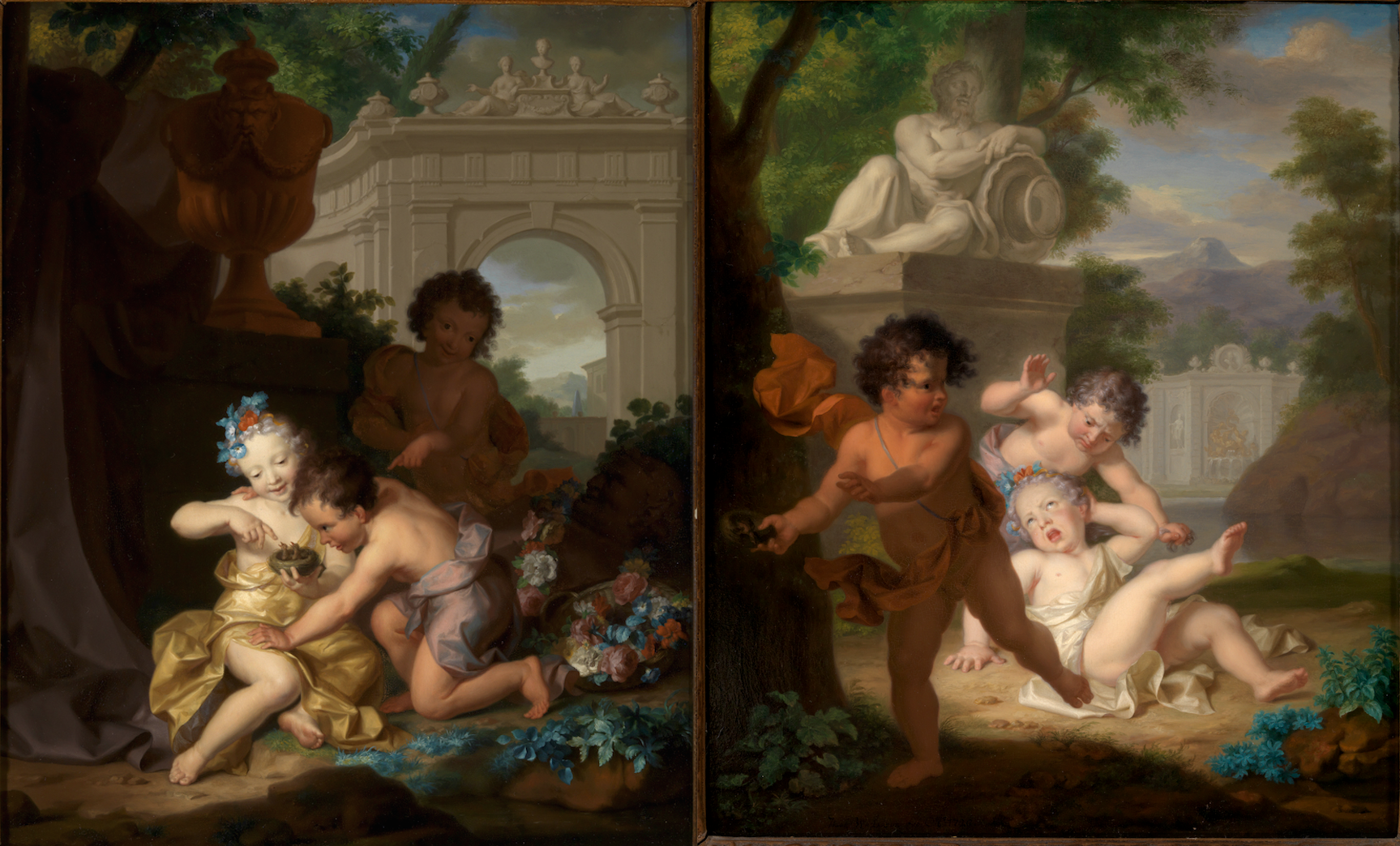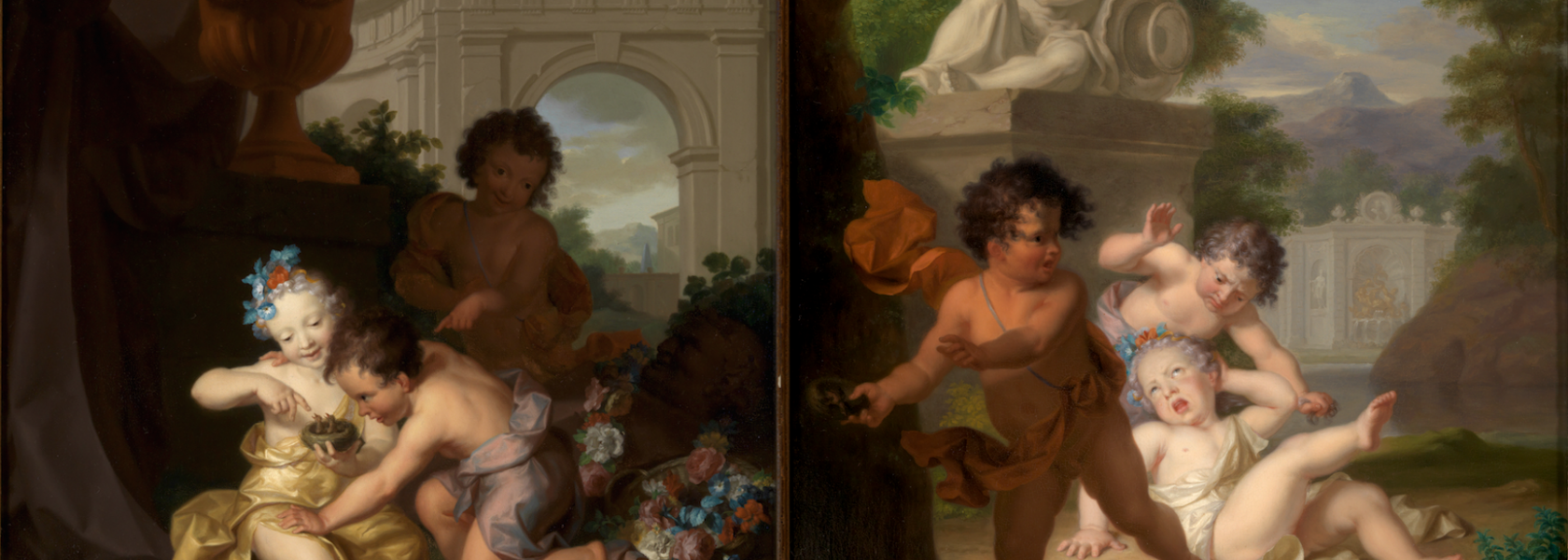Isaac Walraven (1686-1765)
Children find a bird’s nest but end up quarrelling over it
One signed and dated 1718; the second signed and dated 1720, oil on copper
35 x 31 cm a pair (2)
Nowadays, Isaac Walraven is not exactly considered a widely known painter. Although his oeuvre is limited and rarely offered for sale, this pair of paintings, having spent over two centuries in obscurity as part of a private collection, was recently acquired by the Rijksmuseum. This is how.
According to Walraven’s biographer Jan van Gool (1685-1763), the young Isaac was sent to Düsseldorf by his father, to deliver the jewels ordered by Prince-elector Johann Wilhelm of the Palatinate. During his visit, the art collection at the palace so overwhelmed him that he decided there and then to become a painter rather than to follow in his father’s footsteps as a jeweller. His return to Düsseldorf in order to copy the paintings showed his dedication and proved that he had not acted on impulse.
The Prince-elector’s gallery not only harboured Italian bronzes, but also contained a rich collection of paintings by ‘fijnschilders’ (literally ‘fine-painters’). This style, which was introduced in 1630/40 in Leiden by Gerard Dou, strove to indulge the viewer with small-scale wonders of meticulously painted, realistic scenes. Over the course of the 17th century, this style had evolved to such heights that these paintings were highly desired by the European nobility. Especially the Düsseldorf Prince-elector had spared no expense in acquiring some prominent examples of this art form. One of his first conquests was Adriaen van der Werff’s painting ‘Children playing before a Hercules Group’, dating from 1687, now in the Alte Pinakothek in Munich.
https://www.sammlung.pinakothek.de/de/artist/adriaen-van-der-werff/spie….
It is highly likely that Walraven had spotted this painting in Düsseldorf, as van der Werff also portrays the children at play with a bird’s nest. However, while van der Werff’s message is one of education, Walraven captures the course of events chronologically in the pair of paintings. The auction catalogue of Walraven’s inheritance (dated 14 October 1765), which lists the paintings as lot 2 and 3, offers a detailed description of them in 18th century Dutch.
The first painting ‘Three children playing in a landscape with buildings’ shows two boys and a girl, who stumble upon two nestlings in a bird’s nest, while gathering flowers to plait a garland for the Priapus behind them. The children are intrigued by the little birds in the nest. The second painting captures the sudden change in mood from harmonious play into squabbling over the bird’s nest; one of the boys pulls the girl backwards by her hair enabling the other boy to grab, and run off with, the nest. Due to his carelessness, one of the birds tumbles from the nest.
The additional comment that this piece with its delicate and detailed execution on copper plating is as good as those of Sir van der Werff, confirms the recognition of artistic quality even back in those days.


